
RED CLIFFS DESERT RESERVE – More than 10 years after devastating wildfires swept through the Red Cliffs Desert Reserve, biologists are testing a new way to rehabilitate burned desert tortoise habitat.
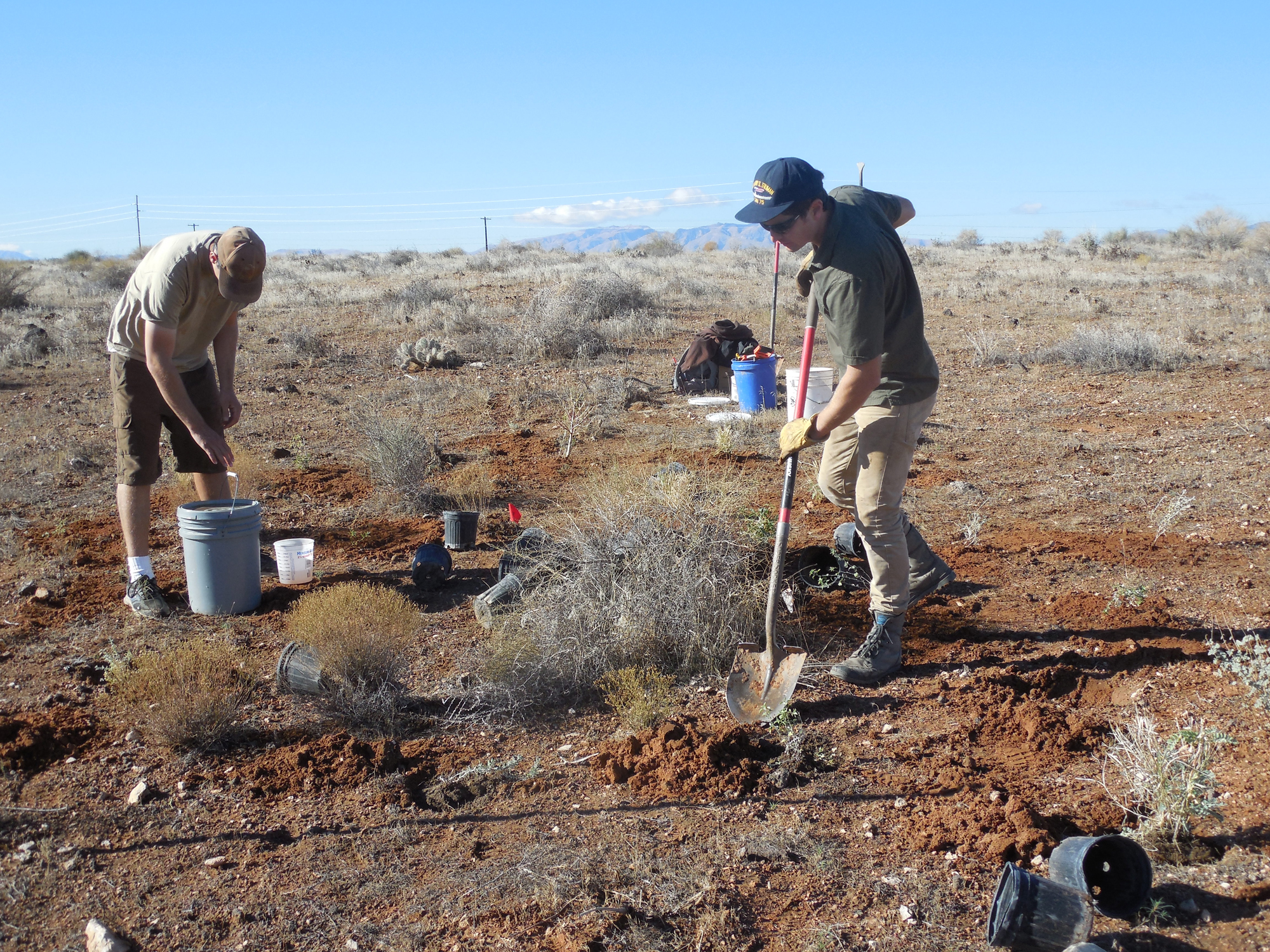
Washington County, Utah, Nov. 22, 2016 | Photo by Julie Applegate, St. George News
Mohave desert landscapes are not adapted to wildfire because plants and shrubs were too widely spread to carry a fire very far. However, invasive annual species such as cheat grass now provide a continuous fuel source that can fuel fires which take decades or centuries to heal.
This week, the Utah Division of Wildlife Resources staff along with AmeriCorps volunteers have been busy putting 1,000 plants in the ground in a 100-acre plot off Cottonwood Road.
It is hoped that container-grown native species planted in groups will survive and form islands which will then seed and spread to the surrounding areas.
Division of Wildlife Resources biologist Ann McLuckie is excited about the project. She is hoping as much as 70-80 percent of the plants survive, and grow big enough to spread.
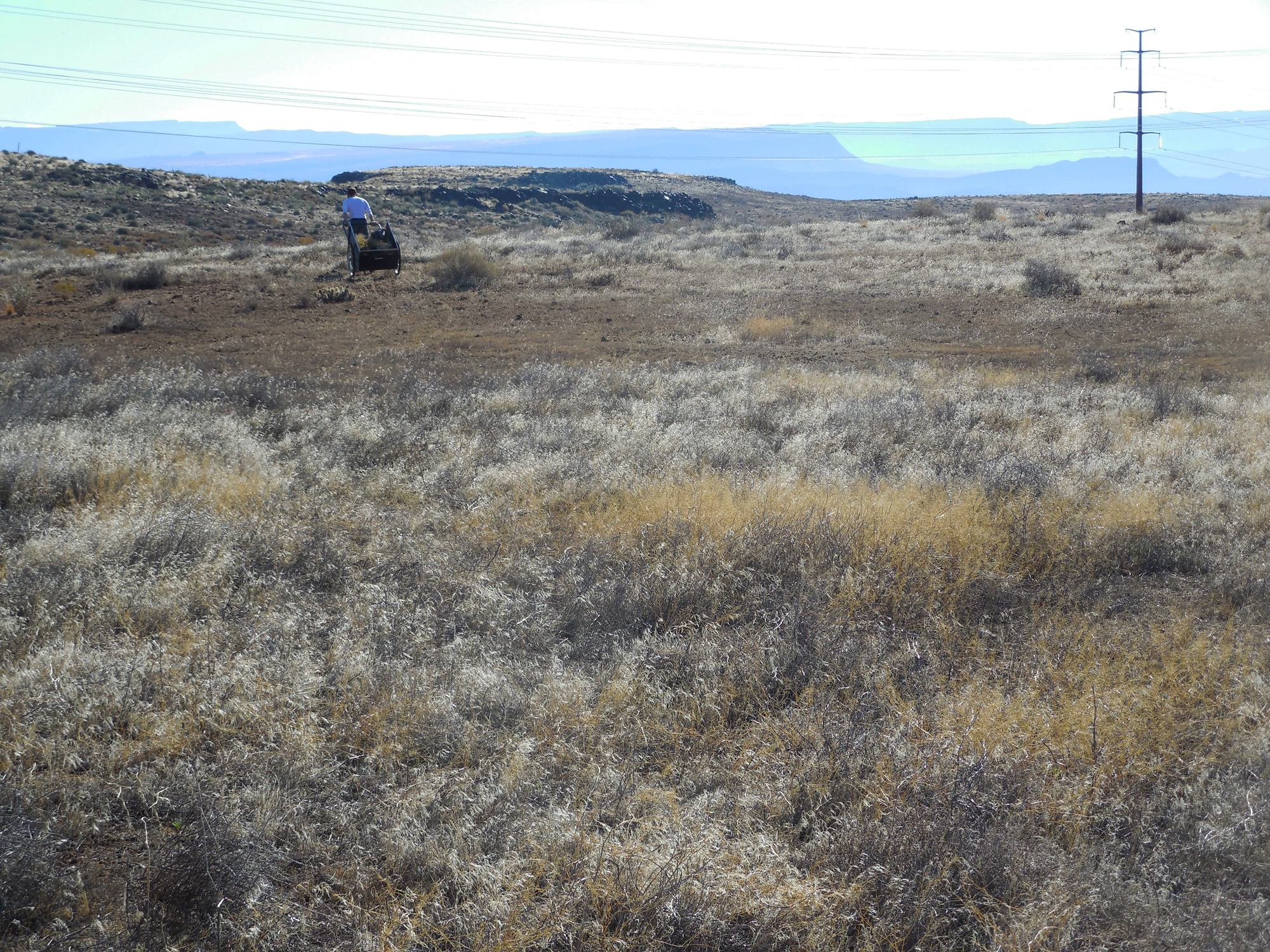
The BLM spent over a million dollars in the year 2000 buying seeds and spreading it by airplane, McLuckie said, however, the survival rate was less than 5 percent.
“If you don’t rake it into the ground, then the seed is very vulnerable to drying out or being eaten by small mice or rodents,” McLuckie said.
Fires in 2005 destroyed tortoise habitat, followed by a very heavy precipitation year that triggered damaging floods in Southern Utah.
“There was just tons of growth, I mean we had weeds up to the waist. It was phenomenal how much fuel was in the desert,” McLuckie said. When summer came, the vegetation dried out and an active monsoon season with lots of lightning started numerous fires and heavy growth carried the fires quickly.
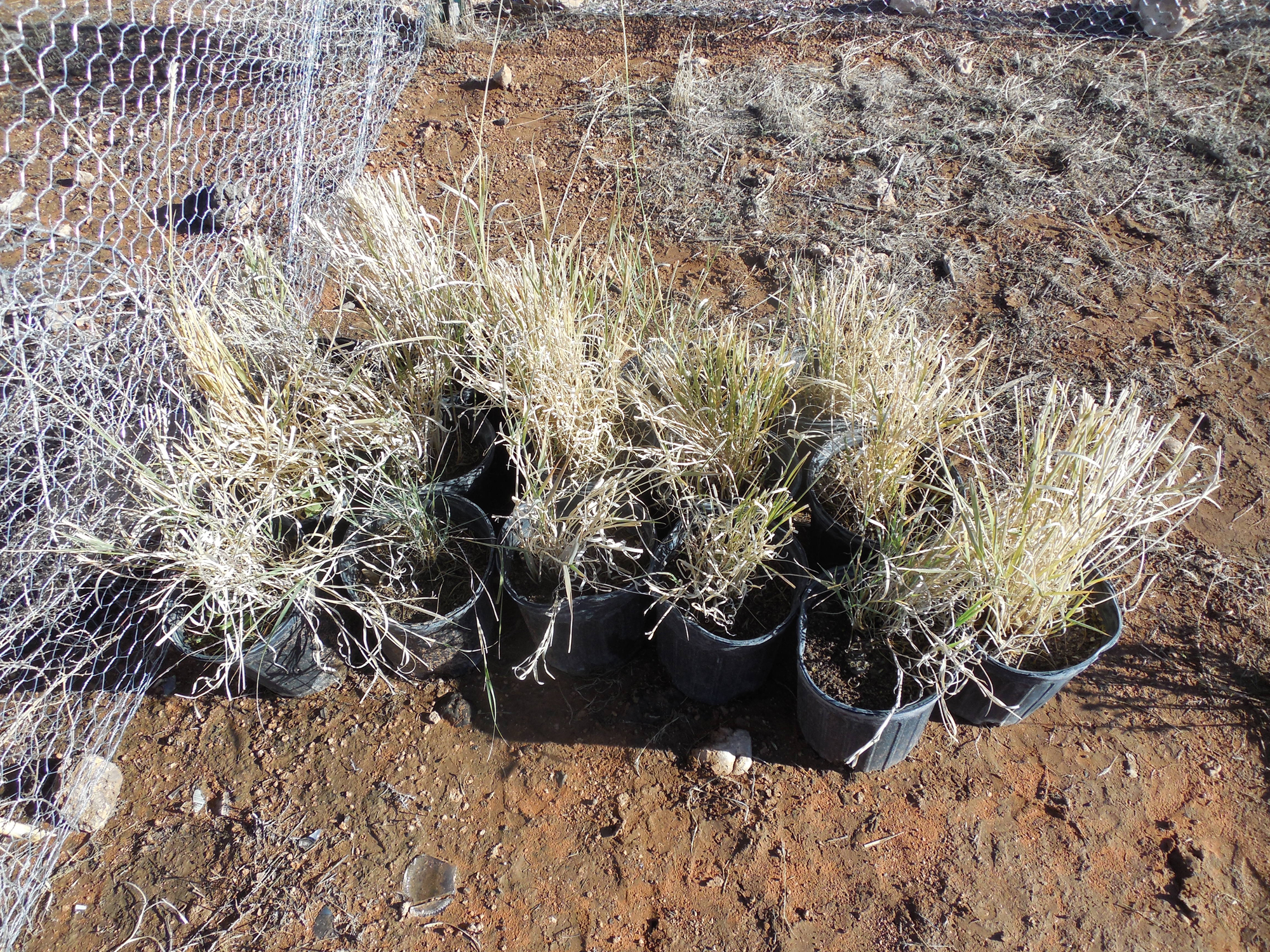
“That was when we had a whole series of fires that pretty much burned a quarter of tortoise habitat within the Reserve,” McLuckie said. “It was pretty significant.”
The wildfires resulted in a drop in tortoise populations of up to 50 percent, McLuckie said, and populations have not rebounded. Now the goal is simply to make sure the tortoise population is healthy and doesn’t drop any further.
“We may never have that number (of tortoises) that we once had because we now we have all of these other factors that we have to think about like invasive grasses that we will never get rid of. We’ll have to just be able to somehow control them to a point where we don’t have to worry about fires.”
In addition, high-density human populations bordering the reserve keep the tortoises from wandering.
“Things have changed and we may never get to those high numbers that we once had, but we do want to focus on making sure populations are healthy and that they don’t further decline,” McLuckie said.
Planting for food, shade
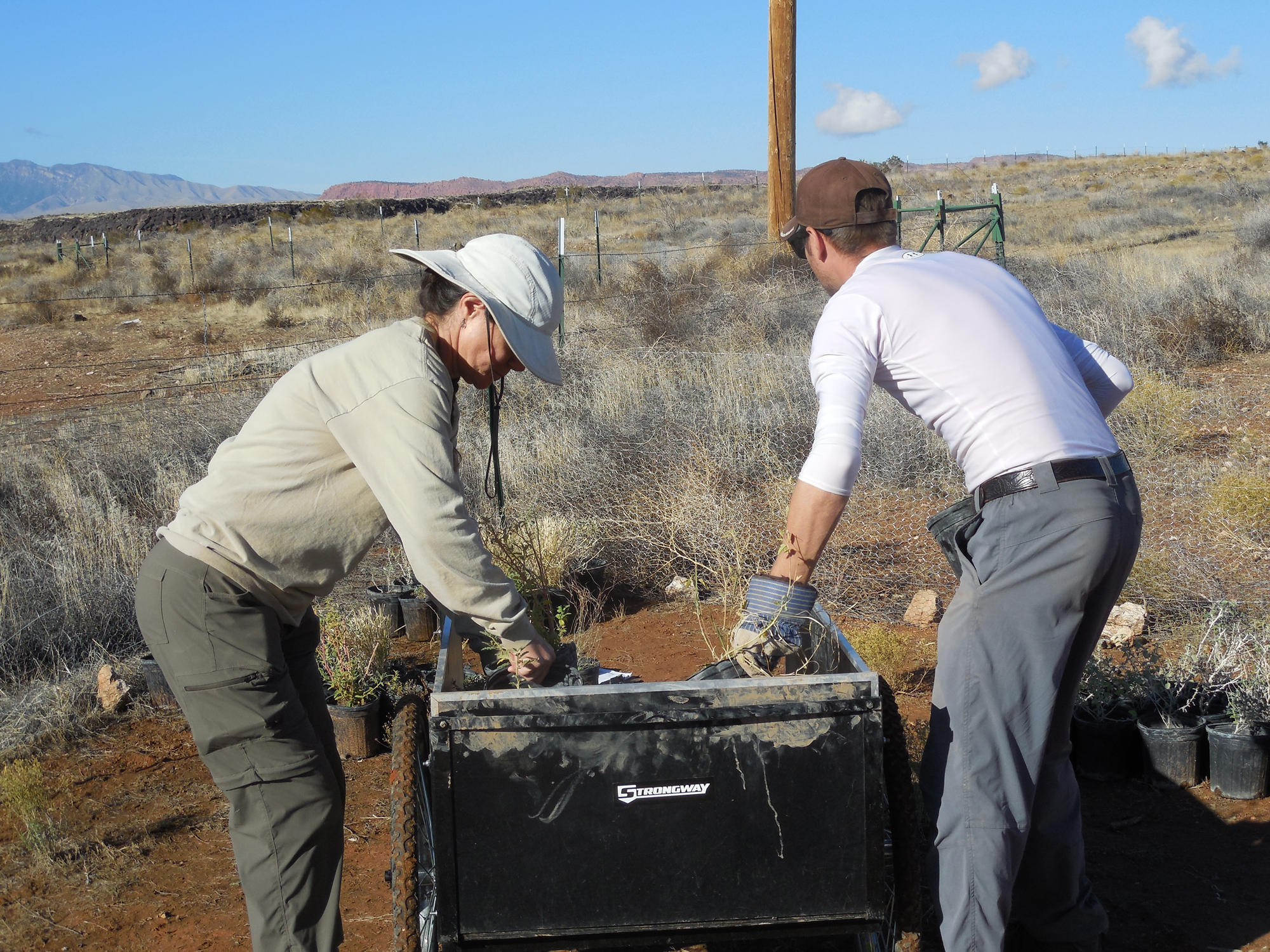
A thousand plants of four different native species were planted in the Red Cliffs Reserve to provide both food and shade for the tortoises.
Big galleta, brittlebush, white bursage and globemallow were planted; the plants were grown from seeds collected locally or elsewhere in the Mohave desert. Local seeds can survive better because they are adapted for the area.
The original plan was for 5,000 container-grown plants to be planted in the Red Cliffs Desert Reserve this fall, but only 1,000 will be planted this season.
“The effort on the Beaver Dam was so intense, in terms of planting, that we requested that he only deliver 1,000,” McLuckie said.
A similar effort has been underway in the Beaver Dam Wash National Conservation Area.
Read more: Planting experiment hopes to help habitat recover from wildfires
“We’re looking at this kind of like as a pilot study, so that when we get the remaining 4,000 that we’ll have a better idea of what methods best increase survival and reduce personnel effort – what are the most efficient planting methods that increase survival,” McLuckie said.
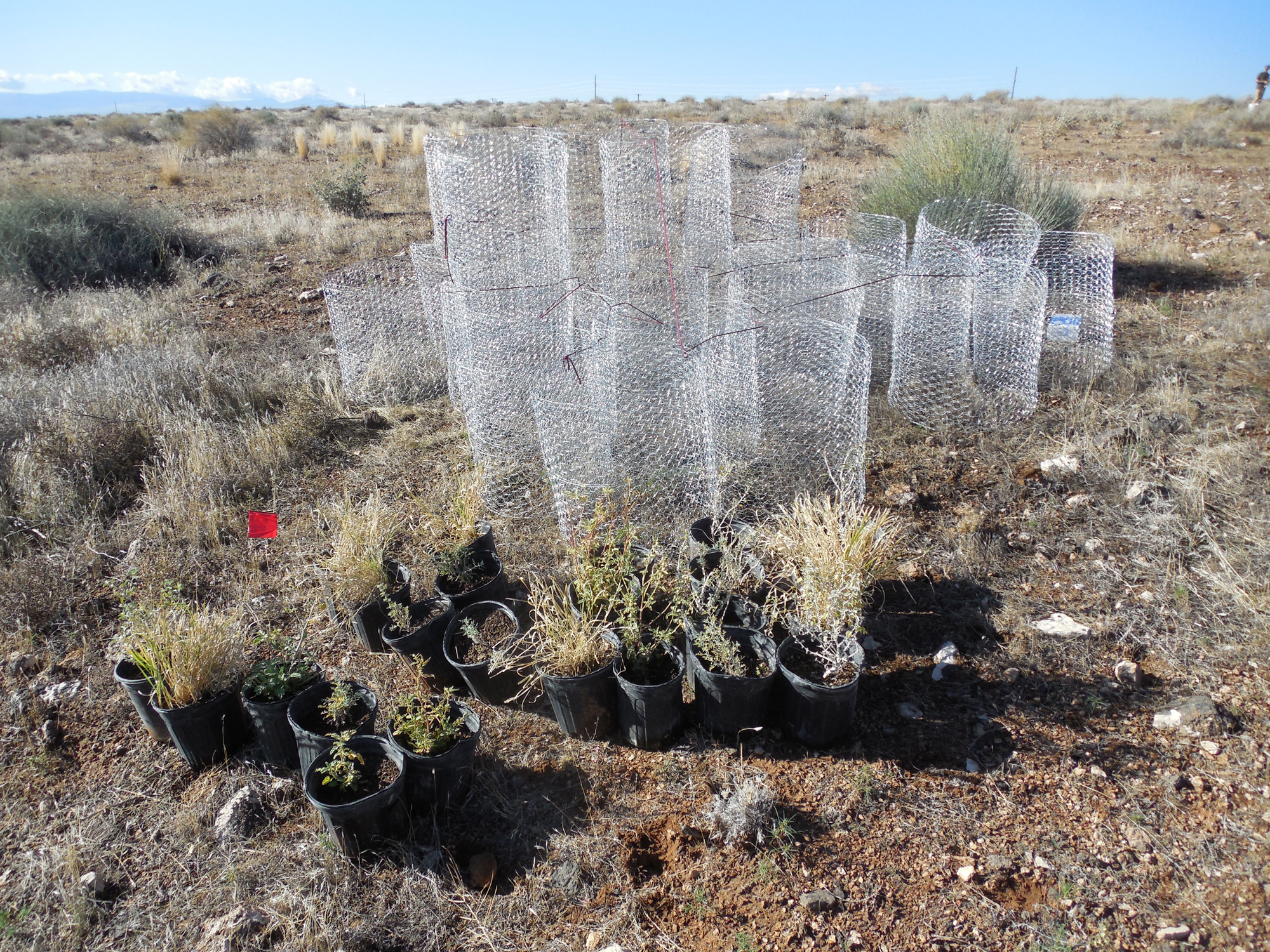
Washington County, Utah, Nov. 22, 2016 | Photo by Julie Applegate, St. George News
Half of the plants will be caged and half will not, to look at whether it helps the plants survive. Biologists will also be watching plant density and diversity at the planting sites, to see which methods have the most success.
“We’re looking at, if you plant a bunch of plants together does that increase survival or not?” she said.
The plants will be watered once a week until they are well-established, then once a month. During the hot summer months, a weekly watering schedule will resume.
“If they survive one year, we can certainly start backing off and maybe stop watering them,” McLuckie said.
“But we want to make sure we provide as much water as we can so that we increase their survival, because, you know, it’s a lot of effort to put plants in the ground.”
While the threatened desert tortoise is the subject of a lot of funding and focus, efforts to conserve the animal also helps other species such as deer and rabbit, McLuckie said.
“We consider the tortoise as an umbrella species. So if you benefit the tortoise, then we’re also benefitting other native species that are here.”
The project is a joint effort between the Bureau of Land Management, The Nature Conservancy, Utah Division of Wildlife Resources, U.S. Fish and Wildlife Service, Washington County, the National Fish and Wildlife Foundation and the University of Nevada, Las Veg
“No agency had to fund the project in its entirety,” McLuckie said.
Fish and Wildlife Service contributed $40,000, Watershed Restoration Initiative spent $30,000, Red Cliffs Desert Reserve spent $20,000 and more than $12,000 came from The Nature Conservancy. In addition, the Bureau of Land Management funded American Conservation Experience volunteers.
Volunteers will be needed in 2017 to help plant an additional 1,500 plants, McLuckie said.
Click on photo to enlarge it, then use your left-right arrow keys to cycle through the gallery.

Pots of big galleta, a native bunch grass, await planting in the Red Cliffs Desert Reserve, Washington County, Utah, Nov. 22, 2016 | Photo by Julie Applegate, St. George News

L-R, Ann McLuckie and Rob Bowers, of the Utah Division of Wildlife Resources, load up a cart with native plants as part of a habitat rehabilitation effort in the Red Cliffs Desert Reserve, Washington County, Utah, Nov. 22, 2016 | Photo by Julie Applegate, St. George News

Utah Division of Wildlife Resources biologist Ann McLuckie loads up a cart with native plants grown for a fire restoration project in the Red Cliffs Desert Reserve, Washington County, Utah, Nov. 22, 2016 | Photo by Julie Applegate, St. George News

Rob Bowers, a technician with the Utah Division of Wildlife Resources, pulls a cart of native plants in the Red Cliffs Desert Reserve, Washington County, Utah, Nov. 22, 2016 | Photo by Julie Applegate, St. George News

Rob Bowers, a technician with the Utah Division of Wildlife Resources, pulls a cart of native plants through a sea of cheat grass in the Red Cliffs Desert Reserve, Washington County, Utah, Nov. 22, 2016 | Photo by Julie Applegate, St. George News

Wire cages and native plants are being used to rehabilitate desert tortoise habitat in the Red Cliffs Desert Reserve, Washington County, Utah, Nov. 22, 2016 | Photo by Julie Applegate, St. George News

L-R, Nathan St. Andre and Jeff Jenkerson, technicians with the Utah Division of Wildlife Resources, plant native shrubs and grasses in the Red Cliffs Desert Reserve, Washington County, Utah, Nov. 22, 2016 | Photo by Julie Applegate, St. George News

Utah Division of Wildlife Resources technician Sarah Siefke carries wire cages which will be placed around newly planted native species in the Red Cliffs Desert Reserve as part of a habitat rehabilitation effort, Washington County, Utah, Nov. 22, 2016 | Photo by Julie Applegate, St. George News

Utah Division of Wildlife Resources technician Megan Linke digs a planting hole as part of a multi-agency effort to rehabilitate part of the Red Cliffs Desert Reserve which was damaged by wildfire, Washington County, Utah, Nov. 22, 2016 | Photo by Julie Applegate, St. George News

Utah Division of Wildlife Resources technician Amy Bardo uses a pry bar to dig a hole for a native plant, part of a rehabilitation effort in the Red Cliffs Desert Reserve, Washington County, Utah, Nov. 22, 2016 | Photo by Julie Applegate, St. George News
Email: [email protected]
Twitter: @STGnews
Copyright St. George News, SaintGeorgeUtah.com LLC, 2016, all rights reserved.


This is absolutely fantastic news and I’m sure this will result in a positive reaction from the community. it’s nice to see people take the initiative to go ahead with such a grand project. I would like to thank all those involved in making this possible. Praise the Lord !
I completely agree that this is great news — but “the Lord” had nothing to do with it. It’s happening because good people are working hard. If “the Lord” hadn’t been asleep at the wheel he (or she) might have prevented the fires that caused this problem in the first place. Praise good hard-working people — and our government they work for and who is funding this.
Why would you replant tortoise habitat while, at the same time, trade away land so developers can make millions?
What we seem to be forgetting is the reason this fire was so devastating or widespread. The timeline goes something like this. Let us go back several years before the fire of a decade ago: The Reserve was fenced and all motor traffic was shut down through this area. Before this, a maze of little traveled roadways crisscrossed the area. This is how it was for many many decades. There were droughts and wet years and fires prior to the closing of the Area (Desert Reserve). Then the fences went up and motor vehicles were shut out. The vegitation began cover these roads (bare ground). In 2004-2005 we had a very wet time and the cheat grass covered the entire area. THEN We had a lightening storm it started a couple of fires. These fires spread very quickly and encompassed vast areas of “the Reserve” For Two Very Good Reasons:
The maze of crisscrossing roads that acted as fire breaks (for prior decades) were covered by fuel (Cheat grass) and these roads which once localized the brush fires were no longer available because of the good intentions of “the Experts”. The other reasons the fires consumed most of the reserve…? because firefighting (motorized) vehicles were not allowed in or on the Reserve. The fact is The closing of these areas to protect the ecosystem actually killed about 50% of the Tortoise population on the reserve. the Millions of Dollars spent for the reserve is actually what decimated the Tortoise population in our area.
Larry, has this explanation been scientifically documented as the reason? What might explain the devastating wildfires elsewhere in southern Utah and the Arizona Strip where we still have free access with our off-road vehicles?